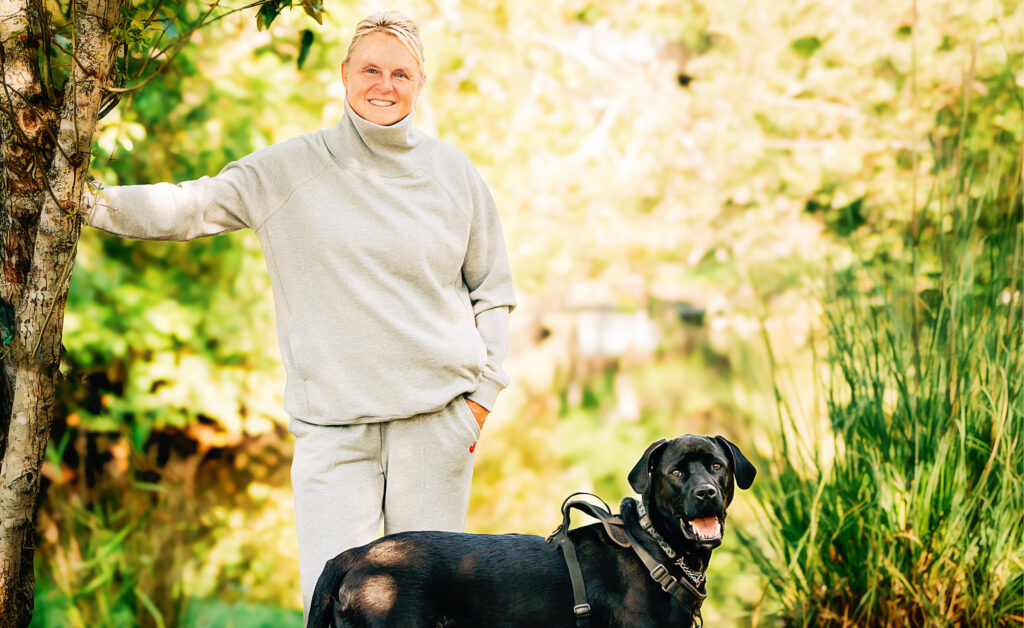by Paula Kully –
I recently had an exciting opportunity to take a ride with our local Royal Canadian Marine Search and Rescue (RCMSAR). Along with Seaside Magazine photographer Cassidy, and RCMSAR crew members Kevin, Brian, Pat and Gordon, we headed out for a real behind-the-scenes experience on an authentic marine rescue craft.
As we left Canoe Cove, someone on shore indicated that a large boat might be having some trouble. The three men onboard, who up until that point had been very casual, suddenly morphed into serious search and rescue mode: directions were given and digital maps were turned on to calculate water depth as we neared the vessel which appeared to be hung up on rocks. As we came within sight of the boat, it really did seem that it was having a hard time moving, but the passengers waved that they were OK and we carried on. Although there was no trouble this time, we did get a sense of what it might be like when this team of trained professionals respond to a real emergency.
Before heading out on our test run, we had been decked out with bright orange jackets that have a floatation device built into them and bright yellow helmets. The uniforms of the RCMSAR crew are designed for visibility, safety and warmth. It also includes safety boots, gloves and a safety vest equipped with tools such as a strobe light, radio, protective gloves, a knife and flashlight. Each “cruiser suite” costs roughly $3,000 and every member has their own which is neatly lined up on hooks and labelled with the owner’s name.
The Royal Canadian Marine Search and Rescue are essentially the first responders of the water. In fact, their motto is “saving lives on the water.” They take their direction from the Joint Rescue Coordination Centre in Victoria after the Coast Guard receives a call for assistance. The Saanich Peninsula team typically deals with two types of calls: PAN-PAN, which is the radio signal for an urgent situation but one that does not currently pose immediate danger; or the well-known Mayday, which is the signal for a life-threatening emergency.
The people who are sent out on these calls are highly trained and 100% volunteer. While most have some recreational boating experience, the time commitment is significant and the rigorous program to prepare them as operational members of the crew can take a year or more to complete. Volunteers must be at least 19 years old, live within 15 minutes of the RCMSAR station, and pass a criminal record check. The Saanich Peninsula RCMSAR has 25 volunteers, two of which are women.
Training begins with 20 hours of “in class” direction accompanied by many hours of personal study. This initial step is merely confirmation that the volunteers-to-be are prepared and knowledgeable enough to be on the boat. From there, training includes everything from log keeping and reporting to heavy weather boat handling, first aid, reading charts and symbols, sound signals, towing, night search and meteorology, to name just a few.
There are four basic crew levels: new crew (after completing the 20 hours of instruction), signed off crew, advanced and captain. Captains complete further training at the regional training centre in Sooke.
Volunteer Gordon Waller explained that after one year he had logged 100 hours on the boat, but it wasn’t until after he had logged 250 that he finally feels he is truly an asset to the captain.
All of this prepares the volunteer team to take on the various emergency situations they are faced with. Within 20 minutes of a call, the team has been briefed and is on the water. They respond to everything from capsized kayakers to more serious situations such as the recent incident where a BC Ferries passenger fell into the water. Typically, the crew responds to approximately 40 calls per year.
With an annual budget of $100,000, fundraising is a constant component of this non-profit organization’s work. Although they are partially funded by BC Gaming Grants, they also rely on donations from the public. So, the next time you see these “keepers of the coast” out in the community, consider the valuable service they provide and support their hard work.




